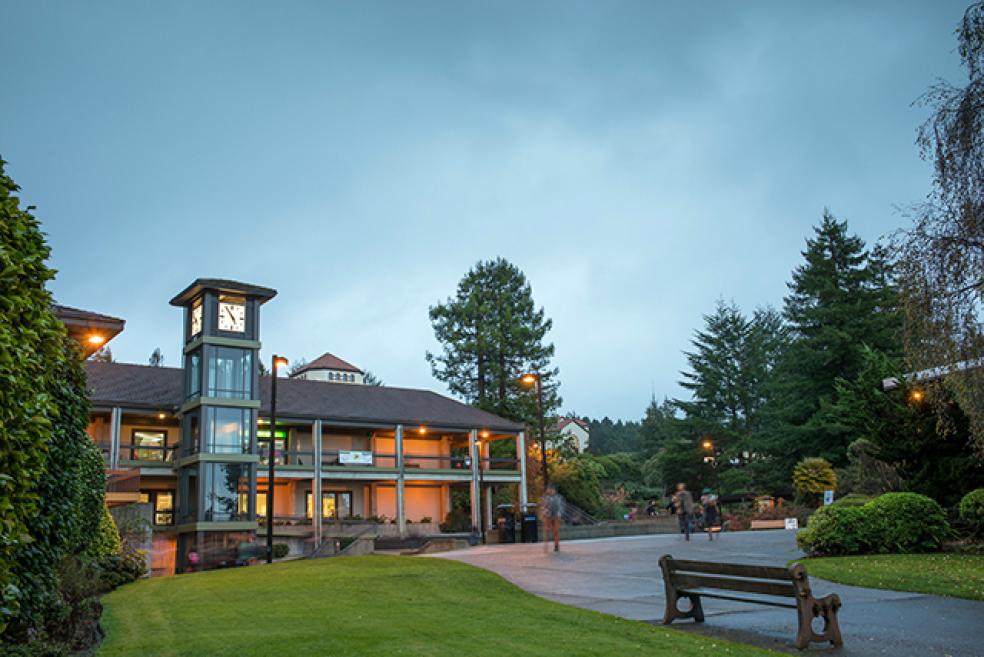
The work is guided by the Committee for Accessibility & Accommodation Compliance (CAAC), a group established in 2015 to review policies and procedures that impact students, employees, visitors, and volunteers with disabilities. The committee not only sets priorities for barrier removal and campus improvements but also serves as the Accessible Technology Initiative Steering Committee, ensuring that inclusion extends beyond the physical environment into the digital sphere.
Accessibility at Humboldt goes beyond pathways and entrances. Since 2017, the Accessibility Resource Center has ensured that course materials, web content, and communications technology meet accessibility standards. The goal is to remove digital barriers just as diligently as physical ones.
“At Cal Poly Humboldt, we believe that accessibility is fundamental to our purpose of fostering an inclusive, supportive, and innovative academic community. Ensuring that every member of our University and our visitors can fully engage in learning, research, and campus life is not only a legal obligation but also a reflection of our shared values of equity and respect,” says Michael Fisher, Acting Vice President for Administration & Finance.
Humboldt’s commitment to accessibility is longstanding. The Campus Disability Resource Center (CDRC)—originally founded as Disabled Student Services more than 30 years ago—has long supported students with disabilities. Today, it plays an even broader role, offering resources to the entire campus community.
In addition, the University employs a Certified Access Specialist to ensure ongoing ADA compliance in all new projects and renovations. Importantly, 10–15% of all project funding is allocated to accessibility features, including improved pathways, door access, and emergency warning systems like smoke alarms with strobe lights for individuals who are hearing impaired.
Recent improvements on campus are notable and varied. To enhance safety and accessibility, more than 300 trip hazards were repaired, and 26 new accessible drinking fountains were installed. The completion of 10 major projects has further transformed the campus environment, including the addition of new sidewalks, upgraded entries, and improved door access.
There has also been a significant focus on digital accessibility, especially with course materials. In this effort, 2,800 documents, 135 videos, and 46 podcasts were updated to meet current accessibility standards, making information more readily available to all users. Finally, a major achievement has been the dramatic reduction in wait times at the CDRC; intake appointments can now be scheduled within one to two weeks, a welcome change from the previous wait time of a month or longer.
Currently, 28 projects are in progress, ranging from bathroom signage and parking compliance to improvements in the Library, College Creek Residence Hall Complex, Behavioral & Social Sciences Building, Harry Griffith Hall, Theatre Arts, and Kinesiology & Athletics buildings. A new set of campus maps will show accessible travel paths through buildings, along with grading percentages, allowing individuals to determine which routes best meet their needs. And new wayfinding signage across campus will direct people to those accessible paths, making navigating Humboldt easier than ever.
Looking ahead, the University is developing an updated ADA Transition Plan, expanding shuttle services and accessible parking, and planning a Disability Awareness Day to encourage dialogue and community engagement around accessibility.
Cal Poly Humboldt has made important progress in reducing barriers and expanding access, but much more work remains. Accessibility is an ongoing commitment, and the University continues to identify and address areas for improvement, encompassing pathways and facilities, as well as course materials and digital resources. Guided by the Committee for Accessibility & Accommodation Compliance and supported by the Accessibility Resource Center and Campus Disability Resource Center, efforts are underway to ensure that all members of the community—students, employees, and visitors alike—can fully participate in campus life.